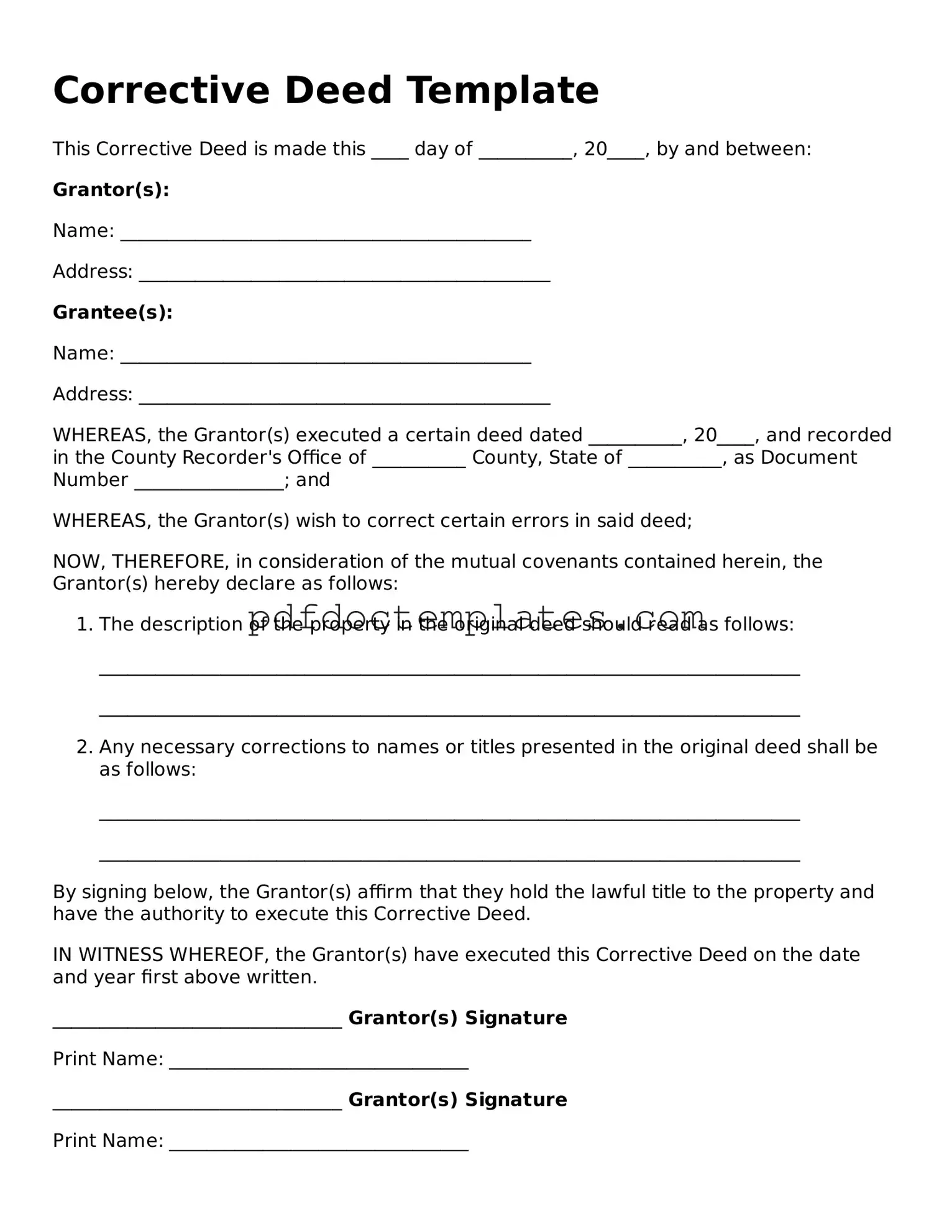Corrective Deed Template
This Corrective Deed is made this ____ day of __________, 20____, by and between:
Grantor(s):
Name: ____________________________________________
Address: ____________________________________________
Grantee(s):
Name: ____________________________________________
Address: ____________________________________________
WHEREAS, the Grantor(s) executed a certain deed dated __________, 20____, and recorded in the County Recorder's Office of __________ County, State of __________, as Document Number ________________; and
WHEREAS, the Grantor(s) wish to correct certain errors in said deed;
NOW, THEREFORE, in consideration of the mutual covenants contained herein, the Grantor(s) hereby declare as follows:
- The description of the property in the original deed should read as follows:
___________________________________________________________________________
___________________________________________________________________________
- Any necessary corrections to names or titles presented in the original deed shall be as follows:
___________________________________________________________________________
___________________________________________________________________________
By signing below, the Grantor(s) affirm that they hold the lawful title to the property and have the authority to execute this Corrective Deed.
IN WITNESS WHEREOF, the Grantor(s) have executed this Corrective Deed on the date and year first above written.
_______________________________ Grantor(s) Signature
Print Name: ________________________________
_______________________________ Grantor(s) Signature
Print Name: ________________________________
STATE OF __________)
COUNTY OF __________)
On this ____ day of __________, 20____, before me, a Notary Public in and for said State, personally appeared __________ and __________, known to me to be the persons described in and who executed the foregoing Corrective Deed, and they acknowledged that they executed the same as their free and voluntary act.
Witness my hand and official seal.
_______________________________
Notary Public
My commission expires: ________________
